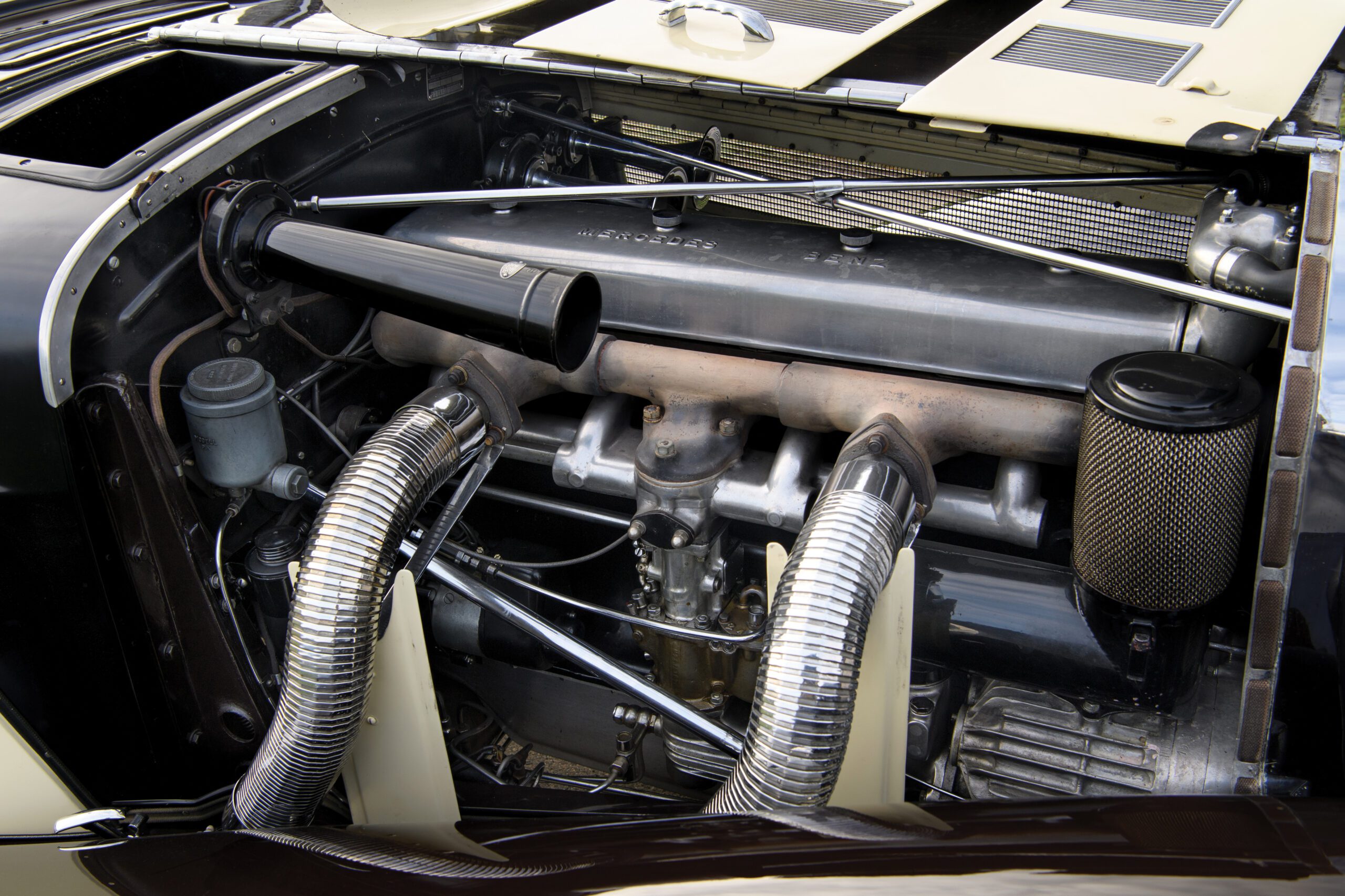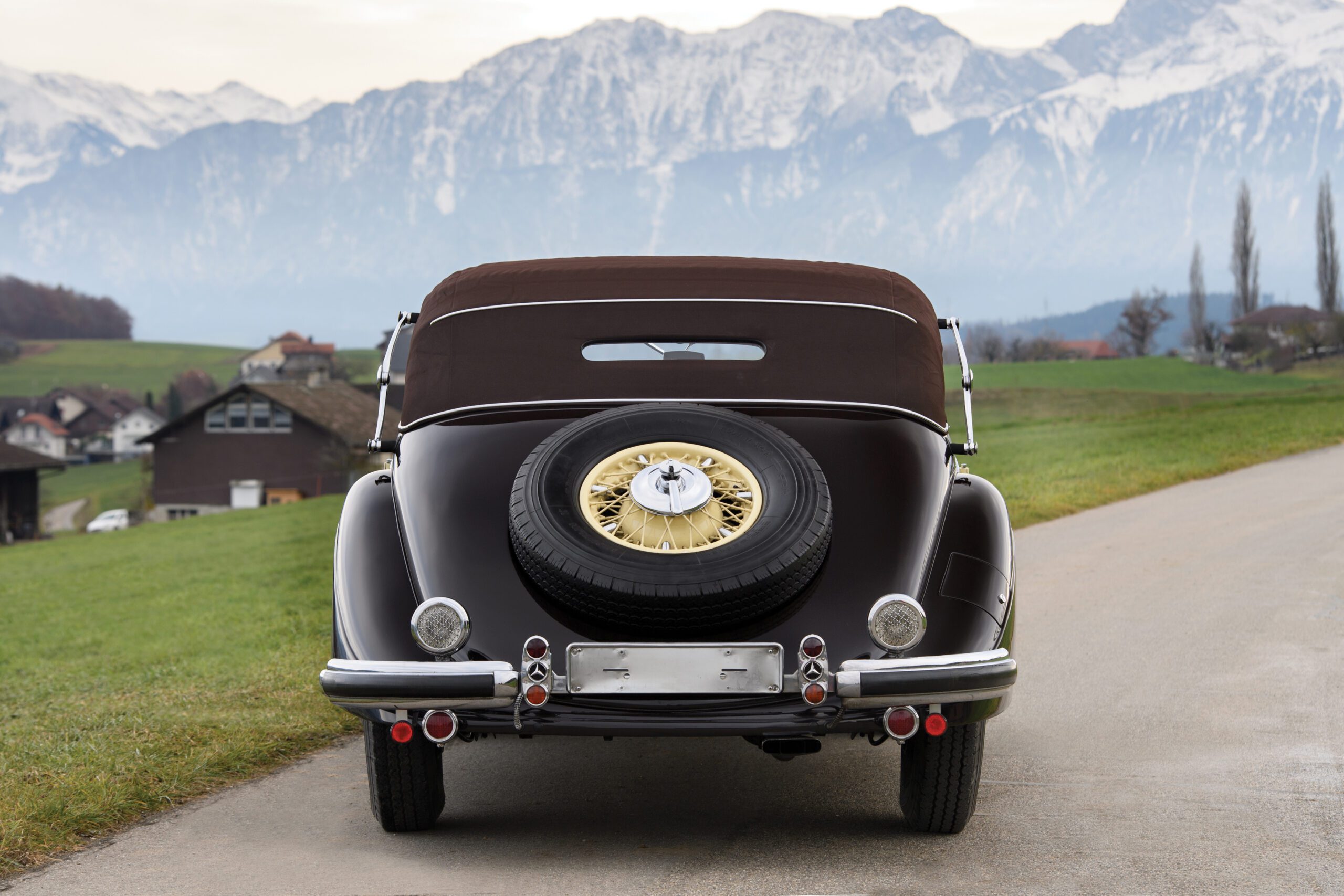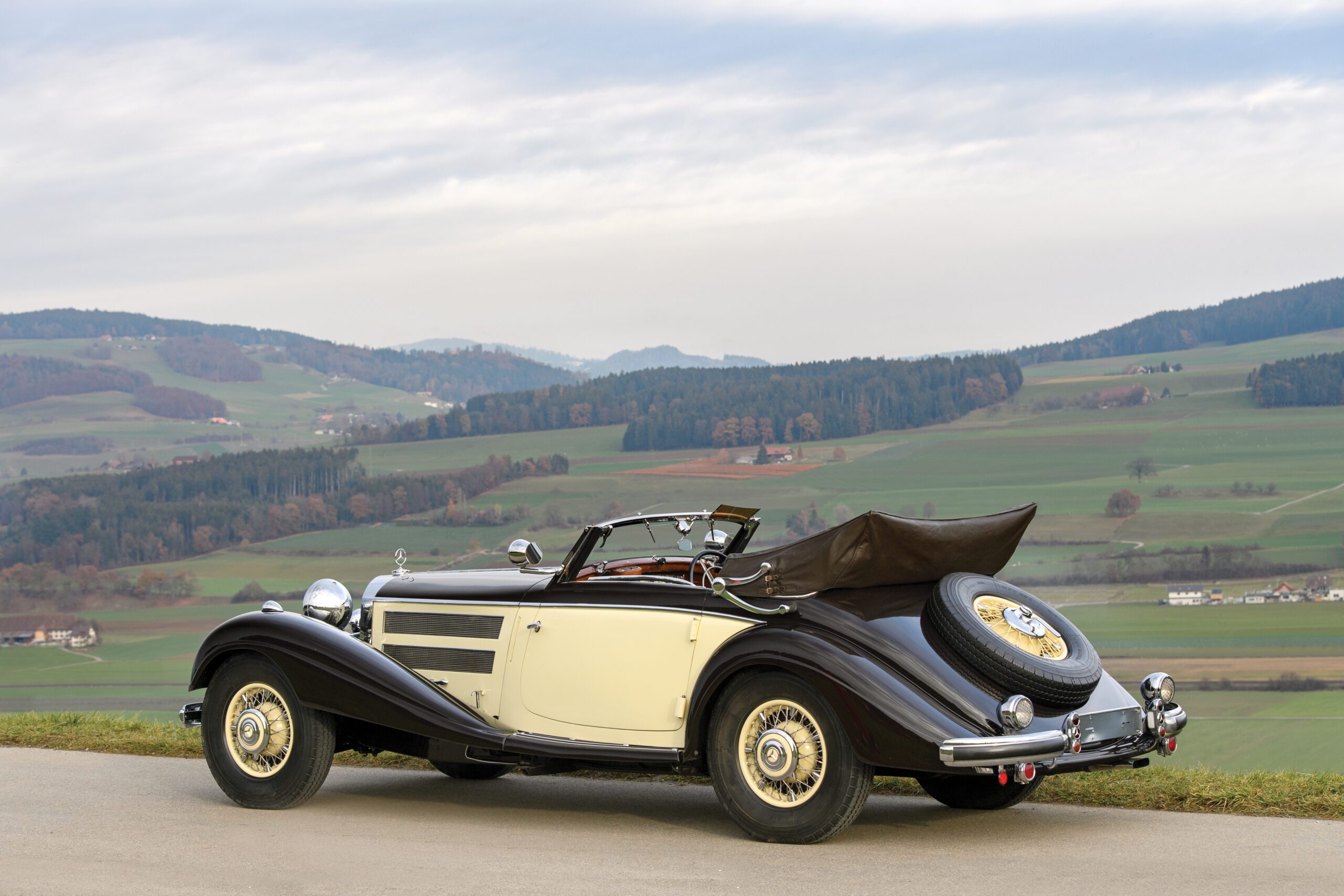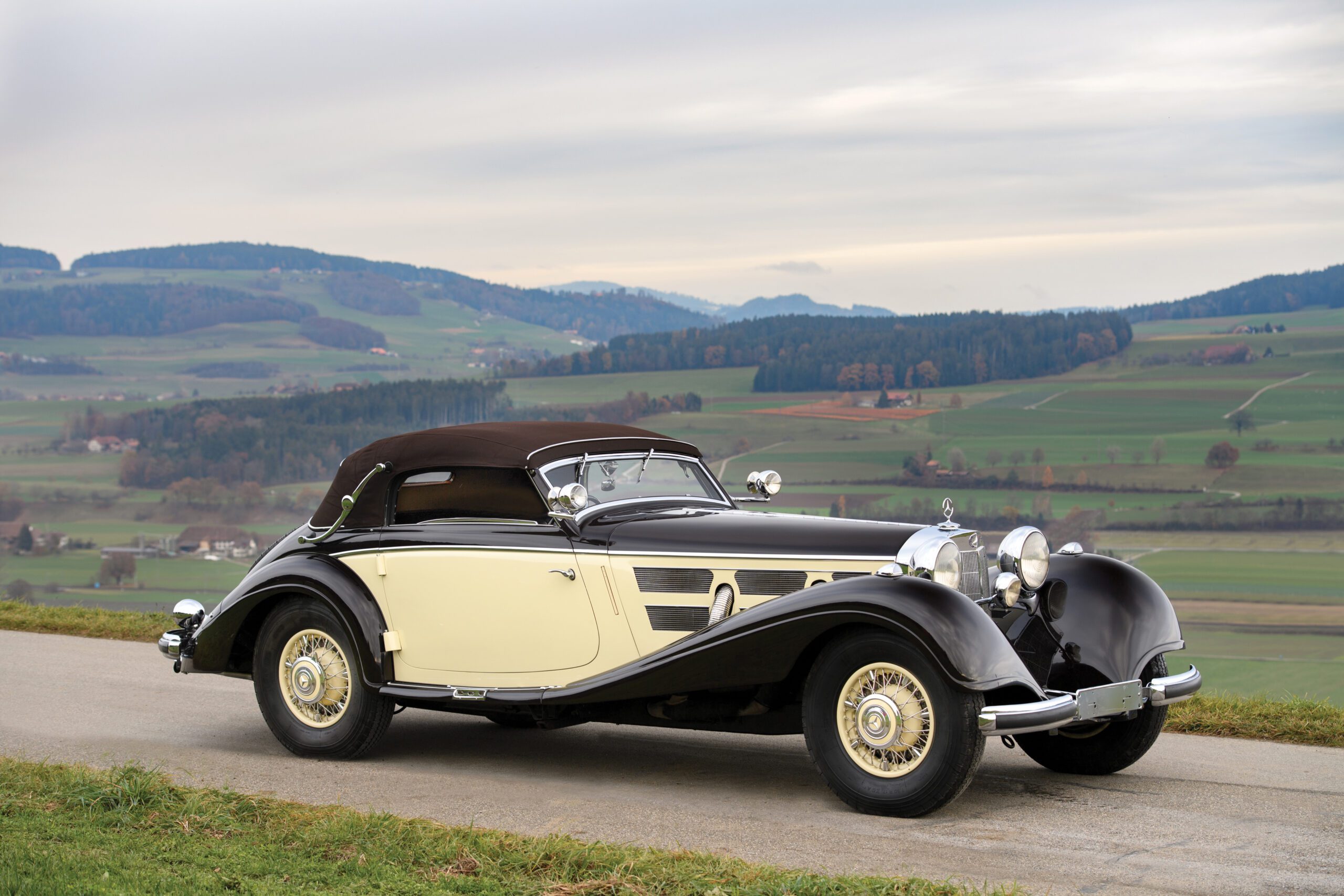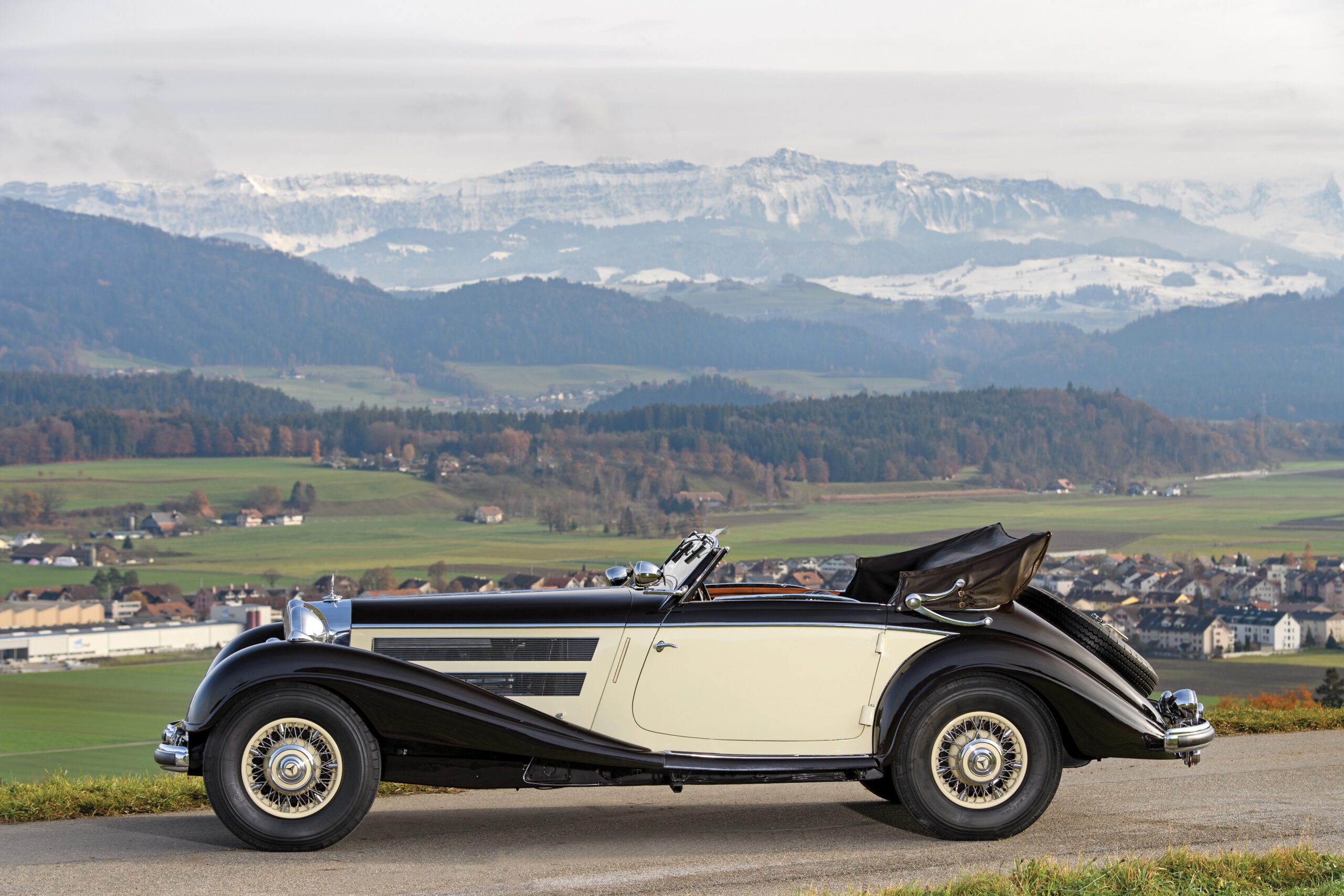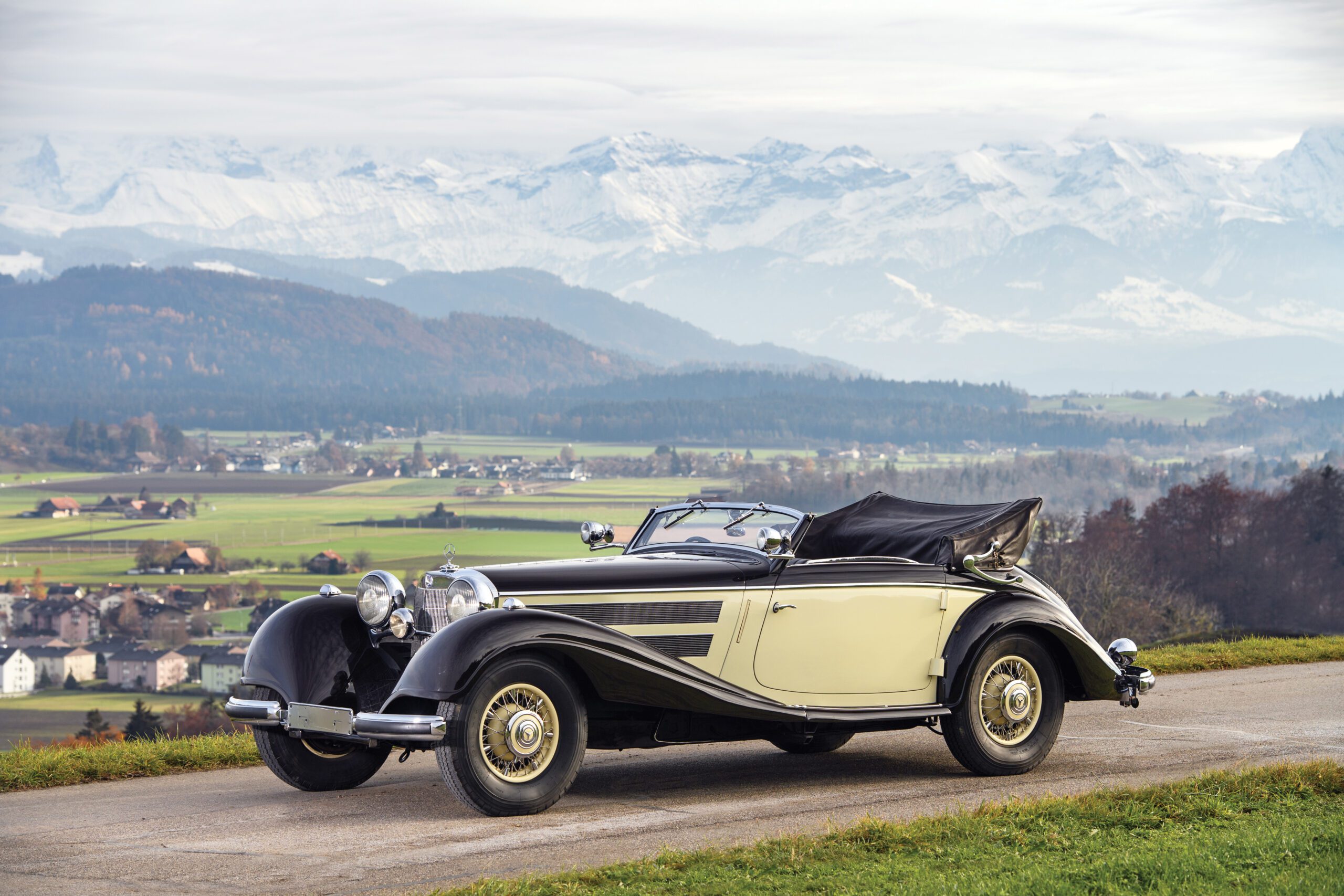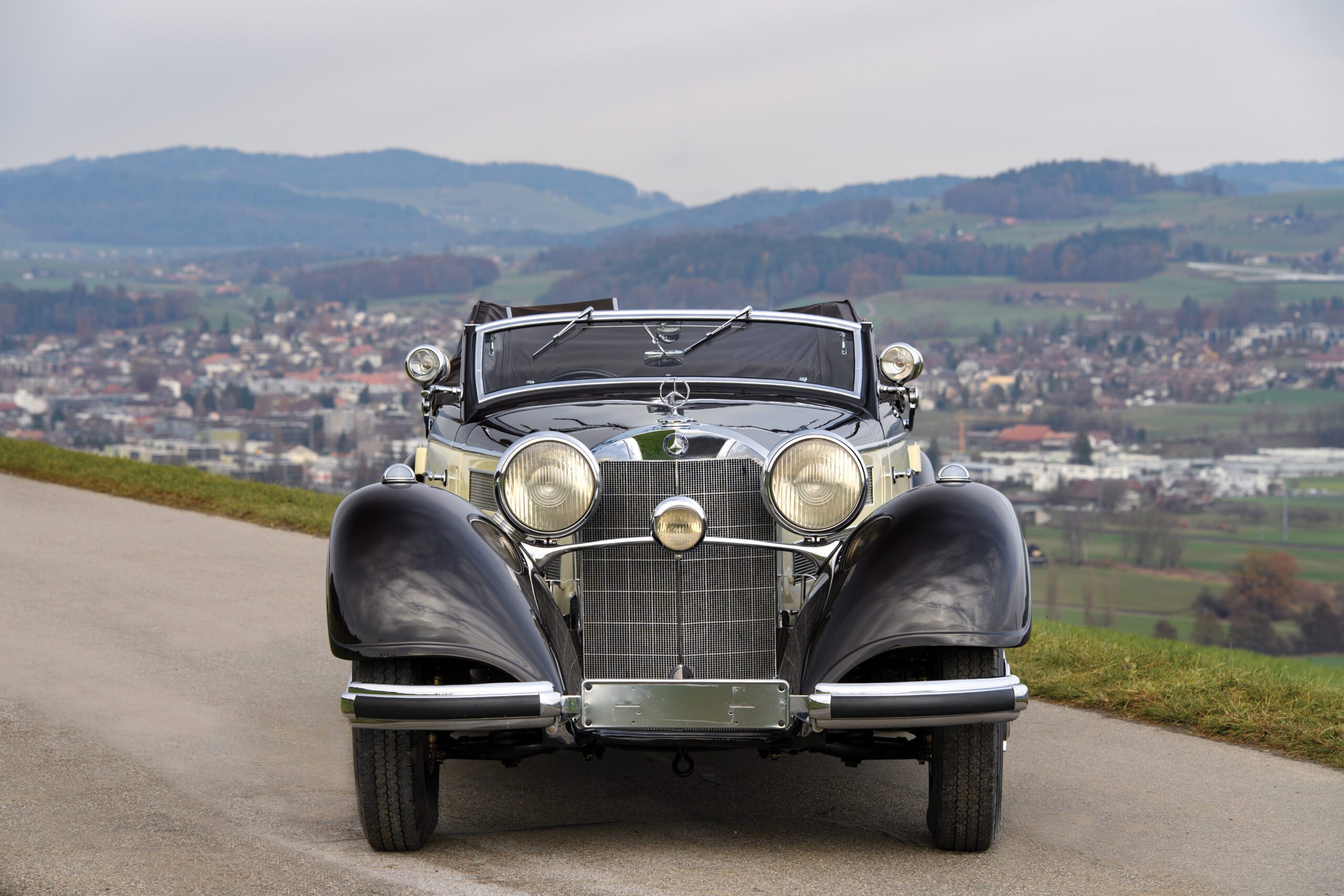The illustrious Mercedes-Benz 500 K and its successor, the 540 K, stand out as perhaps the most remarkable production models offered by the Stuttgart firm in the 1930s. The 540 K evolved from the 500 K, inheriting its independently suspended chassis, but it distinguished itself by a larger 5.4-liter supercharged straight-eight engine.
Engineered under the direction of the new chief engineer, former racing driver Max Sailer, the 540 K marked a significant chapter for Mercedes, succeeding Hans Nibel, who passed away in November 1934 at the age of 54. Notably, this model featured the renowned Roots-type supercharger system. By fully depressing the accelerator pedal, the compressor engaged, and the alternative atmospheric intake to the carburetor closed. This proven system, previously featured in Dr. Porsche-conceived S-Type cars, made the 540 K the last supercharged production Mercedes-Benz until more recent times.
Debuting at the Paris Salon in October 1936, the 540 K boasted an engine producing 115 bhp without supercharging and 180 bhp with the compressor in action. Its gearbox was a four-speed, with a direct top gear, differing from the overdrive ratio used in the earlier 500 K. Activating the supercharger allowed the 540 K’s blown straight-eight to achieve a top speed nearing 110 mph (177 km/h), effortlessly controlled by servo-assisted hydraulic braking.
The car’s impressive performance prompted Mercedes-Benz in the UK to enlist racing driver Goffredo ‘Freddy’ Zehender as a technical advisor and demonstration driver. The supercharged Mercedes, with genuine 100-mph capabilities, was a rare road car in the 1930s.
